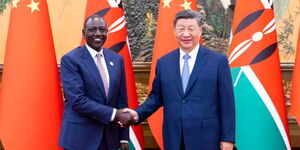You may be forgiven if the only time you think about electricity is when your token meter starts beeping at 3 a.m.
Perhaps you may not have even considered that what powers your TV and fridge started from a generator on the Coast of Mombasa.
You may be surprised to learn that an eccentric Sultan with a penchant for power ploys, an eye for business and ownership rights over a generator is the reason why you can charge your phone and stream movies.
The said generator belonged to the second sultan of Zanzibar, Sayyid Barghash bin Sid Al- Busaid.
A report published by the Business Daily authored on May 24, 2018, credits him with cunning akin to that of the fabled Abunuwasi.
He pitted one country against another in a game of precolonial chess that saw him outwit diplomats from countries including Britain, America and Portugal.
The Sultan’s importance to us now, however, lies in his decision to acquire a generator to light his place and the nearby streets.
I imagine the Sultan grew tired of planning how to make money off the slave trade by candlelight.
But the Sultan, ever the shrewd businessman, did not hesitate when the opportunity presented itself to sell his generator to Harrali Esmailjee Jeevanjee in 1908.
Esmailjee Jeevanjee is an interesting man. His company, the Mombasa Electric Power and Lighting Company, had been given the mandate to provide electricity to the island.
Jeevanjee cut his costs down to the quick by buying the generator off the Sultan in 1908, 33 years after the Sultan bought it.
It formed the beginnings of the Mombasa Electric Power and Lighting Company.
That same year, a gentleman by the name Clement Hirtzel supplied electricity to Nairobi under the Nairobi Power and Lighting Syndicate.
Jeevanjee and Hirtzel eventually merge the two companies into one.
Hirtzel, who was granted exclusive powers to supply electricity in Nairobi for 50 years went on to establish the first hydroelectric plant on Ruiru River.
Hirtzel then scaled up his operations to create the East Africa Power and Lighting Company LTD. The man must have believed that ambition was no sin.
Ultimately, after a couple of years in both Tanzania and Uganda, the company came back to Kenya as its sole operating base.
From a small 30-year-old generator to one of the most lucrative companies in the country.
This is the story of KPLC.












